In the ever-evolving world of coffee, few debates are as spirited as the one between cold brew and espresso enthusiasts. As each coffee style gains traction in different parts of the globe, the Cold Brew vs Espresso discussion continues to percolate through cafes, households, and online coffee communities. While cold brew tantalizes with its smooth, refreshing taste, espresso counters with its bold, concentrated allure. As we dive into this article, we’ll unravel the nuances of both, shedding light on what makes each of these brewing methods uniquely captivating to coffee aficionados worldwide. Whether you’re Team Cold Brew or an Espresso purist, there’s no denying that both have carved out significant places in the rich tapestry of coffee culture.
Take a break from reading – hit play and listen to the article below.
- Introduction & Key Takeaway
- https://app.mysoundwise.com/tracks/16985368899013542e.mp3
- Cold Brew: The Smooth Operator
- https://app.mysoundwise.com/tracks/16985369920597083e.mp3
- Espresso: The Bold and Intense Shot
- https://app.mysoundwise.com/tracks/16985370156448035e.mp3
- Espresso vs Cold Brew: Brewing Techniques
- https://app.mysoundwise.com/tracks/16985370450750127e.mp3
- Flavor Profiles & Taste Differences
- https://app.mysoundwise.com/tracks/16985370790100161e.mp3
- Cold Brew vs Espresso: Serving Styles
- https://app.mysoundwise.com/tracks/16985371089176846e.mp3
- Health Benefits and Caffeine Content
- https://app.mysoundwise.com/tracks/16985371416030293e.mp3
- Popularity and Cultural Significance
- https://app.mysoundwise.com/tracks/16985371638106372e.mp3
- Conclusion & FAQs
- https://app.mysoundwise.com/tracks/16985371909295408e.mp3
Espresso vs Cold Brew: Key Takeaway
- Brewing Process & Time: Espresso is made by forcing hot water through finely-ground coffee beans under high pressure, delivering a concentrated shot in under 30 seconds. In contrast, cold-brew uses coarse coffee grounds steeped in cold water for 12-24 hours, resulting in a smooth and less acidic concentrate.
- Flavor Profile: Espresso boasts a bold, intense flavor with diverse notes ranging from fruity to chocolatey, often accompanied by a delightful bitterness. Cold brew is typically smoother, with reduced acidity, bringing out the coffee’s sweeter and more chocolatey undertones.
- Caffeine Content: A shot of espresso, despite its small volume, packs a strong caffeine punch. The exact content can vary based on preparation and bean type. Cold-brew provides a more extended caffeine release and, although its caffeine content can be higher than regular coffee, it’s usually consumed in larger quantities compared to the concise espresso shot.
- Versatility in Serving: Espresso is the foundation for many coffee drinks, from lattes to cappuccinos, and can also be enjoyed straight. Cold-brew, on the other hand, can be consumed as-is, diluted, or serve as a base for various iced coffee concoctions.
- Cultural Significance: Espresso is deeply entwined with European traditions, particularly in countries like Italy and Spain, symbolizing not just a beverage but a way of life. Cold-brew, a newer trend, reflects modern coffee culture, especially in urban settings and warmer climates, and is emblematic of the coffee scene’s innovation and adaptability.
Cold Brew: The Smooth Operator
In today’s diverse world of coffee, this brewing method stands out as a unique method of brewing that has taken the coffee community by storm. With its distinct flavor profile and brewing technique, it offers a refreshing alternative to the traditional hot-brewed coffee. The debate on iced coffee vs cold brew often emerges among enthusiasts, highlighting the distinctions and preferences between the two. Dive deep into the world of this brewing technique and discover what sets it apart from other coffee beverages.
What is Cold Brew Coffee?
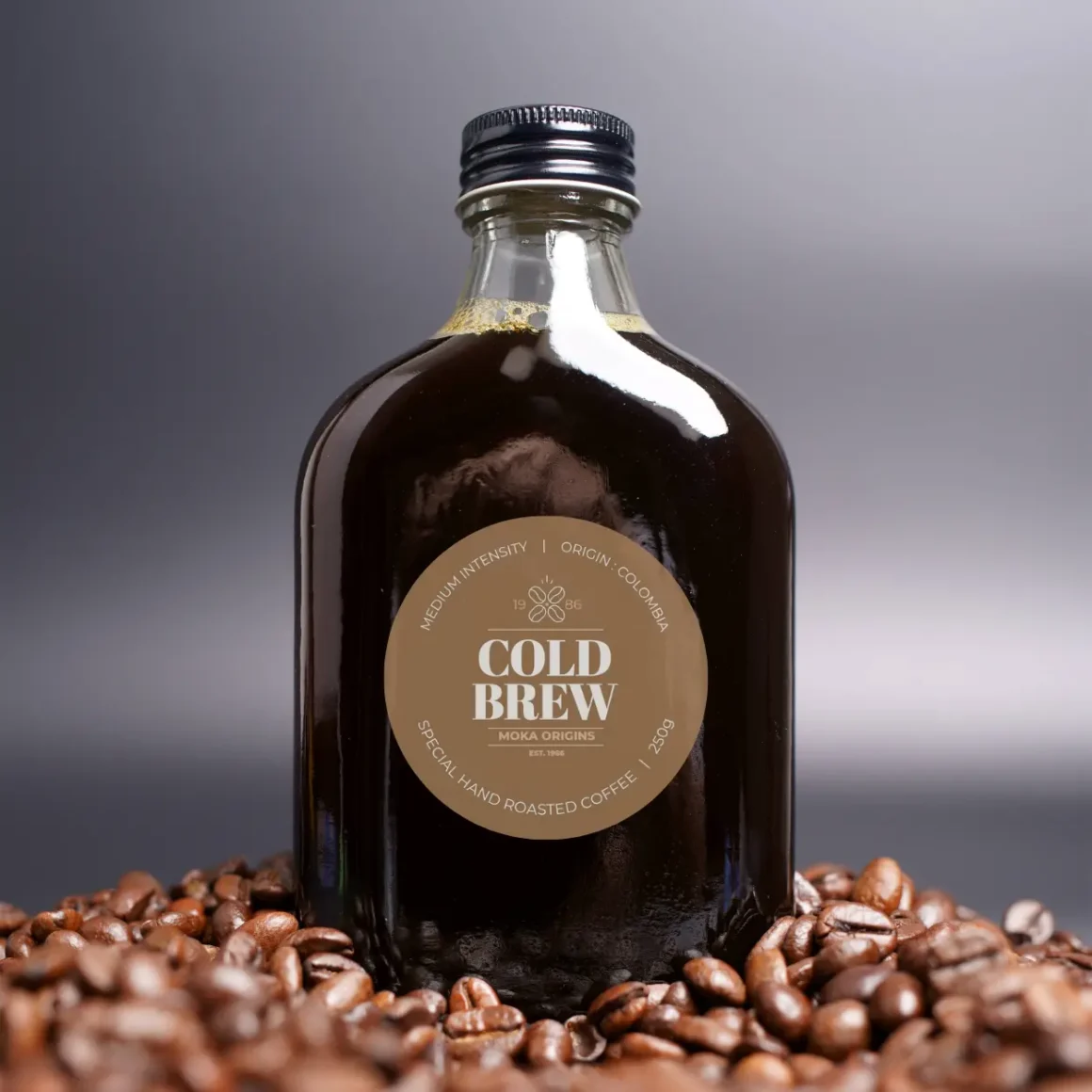
Cold brew coffee, also called cold pressing, is a method of making coffee that entails soaking rough coffee grounds in chilled water over a prolonged duration, typically between 12 and 24 hours. Unlike the traditional methods of brewing coffee with hot water, this technique extracts the flavors from the beans in a more gentle manner, which often leads to a smoother and less acidic taste profile. Once the brewing process is complete, the grounds are filtered out, leaving a concentrated cold pressing coffee, which can be diluted with water, milk, or any other preferred liquid before consumption. (1)
Cold Brew vs Iced Coffee
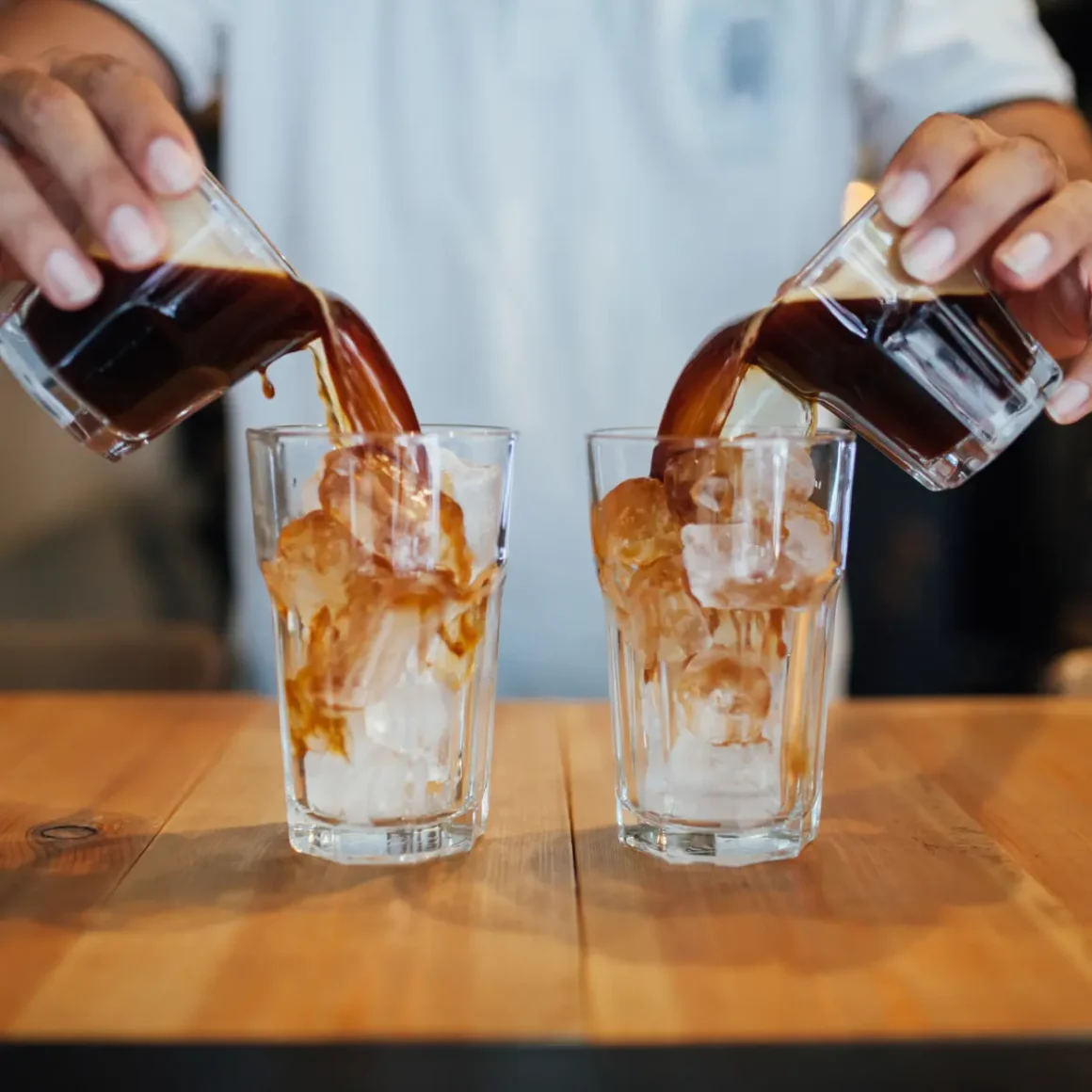
The main difference between iced coffee and cold brew iced coffee revolves around their brewing techniques:
- Brewing Temperature: Iced coffee is made by brewing coffee with hot water and then cooling it down, usually by pouring it over ice or refrigerating it. In contrast, cold brew is made by steeping coffee grounds in cold water for an extended period.
- Flavor and Acidity: As a result of the different brewing methods, iced coffee tends to retain the acidity and robust flavor of hot-brewed coffee. On the other hand, cold brewed coffee usually provides a gentler, more subdued taste and generally has lower acidity.
- Concentration: Cold-pressing coffee is usually more concentrated than regular iced coffee. This is because it’s brewed as a concentrate that can be diluted. Iced coffee is generally brewed at a normal strength and then cooled.
- Caffeine Content: The caffeine content can vary between the two based on the brewing time, coffee-to-water ratio, and the type of beans used. However, due to its concentrated nature, cold-pressing coffee can sometimes have a higher caffeine content than its iced counterpart when not diluted.
The Science Behind Cold Brew’s Flavor
The unique flavor profile of this delectable coffee can be attributed to the science of extraction:
- Solubility: The solubility of the compounds in coffee changes based on temperature. Hot water can extract both desirable and undesirable compounds quickly, leading to the full-bodied and sometimes acidic or bitter taste of regular coffee. Cold water, being less reactive, extracts these compounds slowly and selectively, often leaving behind many of the compounds that cause bitterness and acidity.
- Oxidation and Degradation: The extended brewing time of this brew at a lower temperature reduces the chances of oxidation and degradation, which can contribute to sour or stale flavors. The reduced exposure to heat preserves the fresh, smooth characteristics of the coffee.
- Oil Extraction: The oils in coffee beans contribute to its rich flavor. Cold water is less efficient at extracting these oils than hot water. This leads to a beverage that is smoother and less heavy on the palate, with a distinct flavor profile.
In essence, the method of brewing, temperature, and duration play crucial roles in shaping the flavor profile of this refreshing drink, making it the smooth operator in the world of coffee.
Espresso: The Bold and Intense Shot
The world of coffee is vast and varied, with each brewing method offering a unique flavor and experience. At the forefront of this world stands the espresso, a concentrated shot that promises an intense flavor and an immediate caffeine kick.
What is Espresso?

Espresso is a method of making coffee that forces a small amount of nearly boiling water through finely ground espresso beans. The result is a thicker, creamier coffee with a stronger concentration of caffeine than most other brewing methods. Its signature feature is the creamy foam on top, known as “crema,” which is a result of the high-pressure extraction process. This method emphasizes the flavorful components of the espresso coffee, delivering a bold and aromatic taste in a small serving. (2)
Espresso vs Drip Coffee
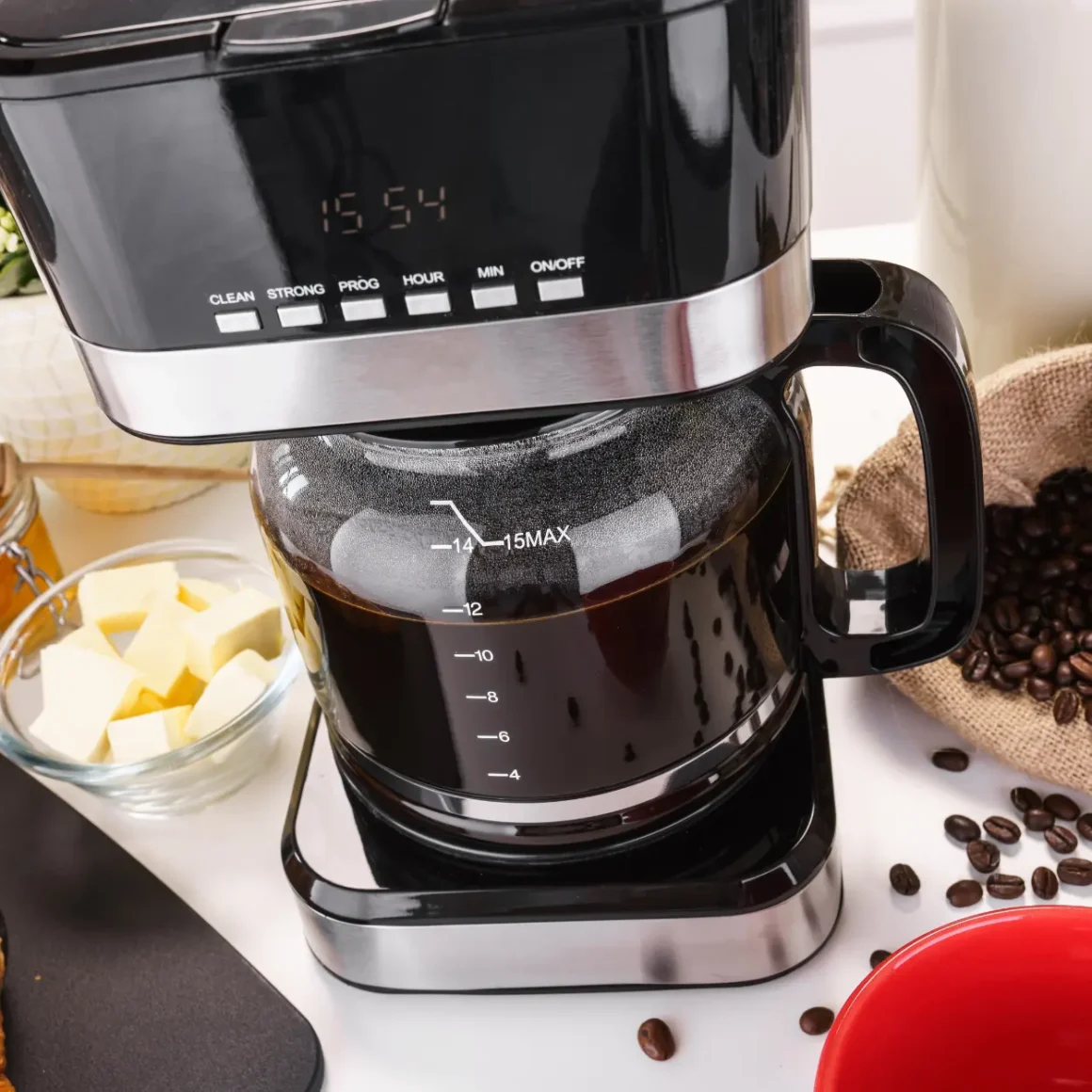
The debate of espresso vs drip coffee revolves around their brewing techniques and resultant flavors:
- Brewing Method: Drip coffee uses a passive method where hot water passes over coffee grounds and filters through, collecting flavors along the way. In contrast, making espresso involves an active method, forcing hot water through fine espresso beans under high pressure.
- Flavor Concentration: Espresso is often more robust and concentrated, owing to its quick, high-pressure brewing process. Drip coffee, on the other hand, offers a milder, more extended flavor experience.
- Volume: A typical serving of espresso is much smaller—often just an ounce or two—compared to a standard cup of drip coffee.
- Caffeine Concentration: While an espresso shot might have more caffeine by volume, a standard cup of drip coffee usually contains more total caffeine due to its larger serving size.
Espresso vs Cold Brew: Brewing Techniques
With a myriad of coffee types available, the methods to brew them are just as varied. Delving into the intricacies of these techniques reveals the art and science that go into every cup, whether it’s a soothing cold brew or a robust shot of espresso.
How to Make Cold Brew Coffee

When diving into the world of coffee, understanding how to make cold brew coffee can lead to a refreshing experience. As previously discussed, cold pressing coffee is not to be confused with iced coffee, it’s produced by soaking roughly ground coffee beans in cold water over an extended period., often ranging from 12 to 24 hours. Here’s a simple step-by-step guide:
- Select the Beans: The best coffee for this type of brew is typically a medium to dark roast, though personal preferences can vary.
- Grind the Beans: Coarse grounds are ideal for this method to ensure optimal extraction without over-extracting and turning the brew bitter.
- Measure: Use a ratio of about 1:4 (coffee to water) for a standard concentrate.
- Combine & Steep: Mix the grounds and water in a jar or pitcher, ensuring all the coffee is submerged. Cover and let it sit at room temperature or in the refrigerator.
- Filter: After steeping, strain the mixture using a fine-mesh sieve or a purpose-made cold brew coffee maker.
- Serve: The resulting concentrate can be diluted with water, milk, or any other preferred liquid.
How to Make Espresso

Achieving the perfect espresso coffee is both an art and a science. Here’s how to make espresso that stands out:
- Selecting the Beans: Choose high-quality, fresh espresso beans. Beans used for espresso are often roasted to a medium to dark level, but the best roast level is largely a matter of personal preference.
- Grinding: Grind the espresso beans to a consistency similar to table salt. The grind should be fine but not powdery. A consistent grind size is crucial for even extraction.
- Dosing the Coffee: Measure the right amount of coffee grounds. A standard single shot of espresso typically requires about 7-9 grams of coffee, while a double shot requires 14-18 grams.
- Tamping: Transfer the coffee grounds to the portafilter. Use the tamper to press down on the grounds with even pressure, creating a smooth, flat surface. Ensure there are no gaps or uneven areas.
- Brewing: Insert the portafilter into the espresso machine’s group head and start the shot. A standard single espresso shot typically takes about 25-30 seconds to brew. During this time, hot water is forced through the coffee grounds under high pressure.
- Consumption: Finally, when it comes to how to drink espresso, traditionalists might argue for sipping it plain to appreciate its full flavor. However, many enjoy it with a splash of milk, a sprinkle of sugar, or as the base for other coffee beverages like lattes or cappuccinos.
Remember, making the perfect espresso requires practice. Adjusting the grind size, tamp pressure, and brewing time can help refine the flavor and quality of your shot.
Pros and Cons of Cold Brew and Espresso Machines
Both of these brewing techniques have their own sets of advantages and drawbacks, primarily determined by the equipment used:
Cold Brew:
- Pros: Easy to make in bulk, smoother and less acidic flavor, versatile in terms of serving (can be consumed cold or hot), longer shelf life.
- Cons: Requires a longer brewing time (12-24 hours), can take up refrigerator space, and may not be as flavorful as hot brewing methods for some.
Espresso coffee Machines:
- Pros: Quick coffee preparation, offers a concentrated and rich flavor, versatile as it can be used as a base for various coffee beverages.
- Cons: Machines can be expensive and require regular maintenance, the brewing process may have a steeper learning curve, demands freshly ground beans for the best taste.
Overall, the journey of coffee from bean to cup is dictated by various factors and personal preferences. Whether you’re savoring the mellowness of a cold brew or the intensity of an espresso shot, understanding the brewing process adds depth to every sip.
Flavor Profiles & Taste Differences
The world of coffee is vast, and its landscape is defined by the myriad of flavors and aromas that beans and brewing methods offer. From the soothing allure of cold brewed coffee to the audacious punch of espresso coffee, understanding their unique flavor profiles and the factors that contribute to these tastes can greatly enhance one’s coffee experience.
Cold Brew Taste Characteristics
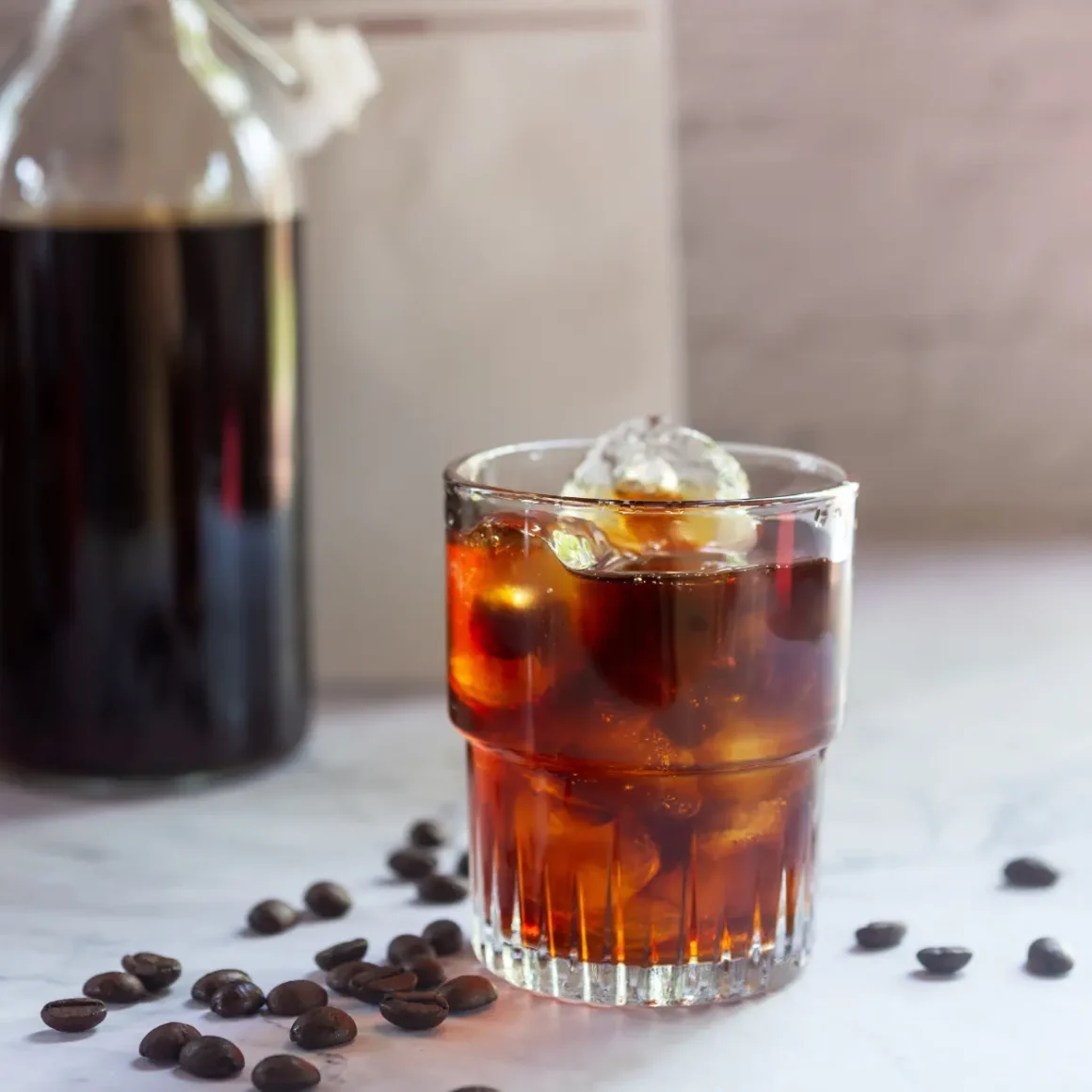
Cold brewed coffee has risen in popularity owing to its unique and distinctive flavor characteristics. Unlike its hot counterparts, this type of brew offers:
- Smoothness: One of the most notable features of this delightful drink is its velvety smooth texture. This is largely because its cold extraction process reduces the amount of bitter compounds pulled from the coffee grounds.
- Low Acidity: this kind of brew is often described as being less acidic than traditionally brewed coffee. This makes it an appealing option for those with sensitive stomachs or who simply prefer a mellow taste.
- Sweet Undertones: As the bitterness is toned down, the natural sweetness of the coffee bean comes forward. This often leads to subtle notes of chocolate, caramel, or even fruity flavors, depending on the beans used.
Espresso’s Bold and Intense Profile

Espresso coffee is the antithesis of cold-pressing coffee in many ways. Brewed quickly under high pressure, its characteristics include:
- Concentration: Espresso is a concentrated beverage, which makes its flavors and aromas intensely pronounced. A single sip can encapsulate the essence of the entire coffee bean.
- Crema: A hallmark of a good espresso shot is the presence of crema – a creamy, golden layer on top that is a blend of oils, proteins, and sugars. This adds a slight bitterness and richness to the espresso.
- Complexity: Due to its concentration, an espresso shot can offer a wide spectrum of flavors, from fruity and floral to smoky and spicy, all within a single sip.
Factors Affecting Taste: Beans, Grind, & Water
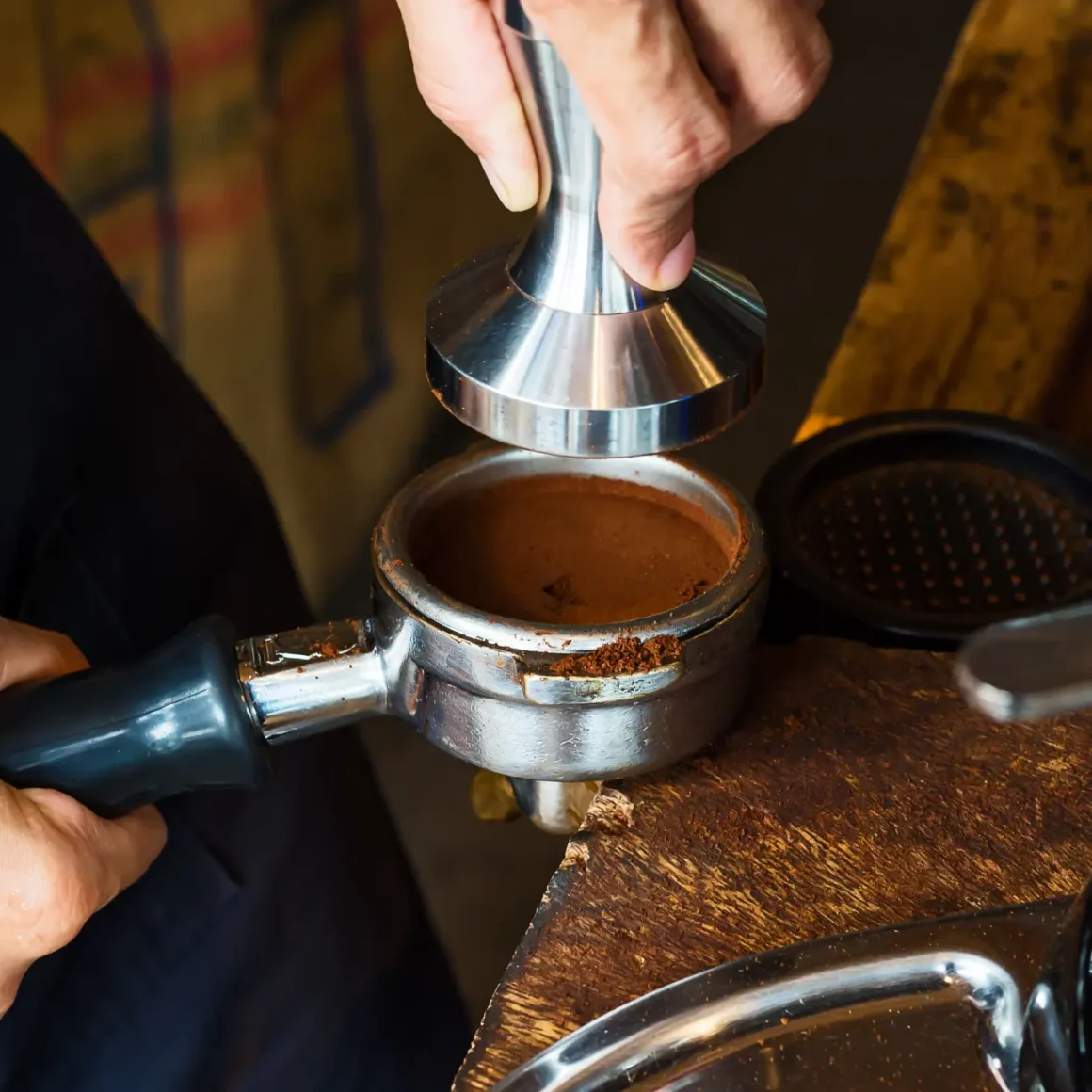
The taste of any coffee, be it cold-brew or espresso, is deeply influenced by various factors, among which beans, grind, and water stand out:
- Beans: The best coffee beans are not just about their quality but also their origin, roast level, and freshness. Beans from different regions have distinctive flavor profiles, and their roast can range from light to dark, each imparting unique tastes.
- Grind: The coarseness or fineness of the grind can dramatically affect flavor extraction. For instance, espresso requires a fine grind to ensure a swift yet comprehensive extraction, while cold pressing benefits from a coarser grind for its prolonged steeping process.
- Water: The purity and mineral content of water can modify the taste of coffee. Soft water can highlight the subtle flavors in coffee, while hard water might overshadow them. The temperature of water also plays a pivotal role, especially in methods like espresso where precise temperatures are essential.
In sum, the journey from coffee bean to cup is an intricate dance of variables. Recognizing the nuances each factor brings can elevate one’s appreciation and enjoyment of the final brew.
Cold Brew vs Espresso: Serving Styles
From the café down the street to the coffee enthusiast’s kitchen, the ways in which we serve and enjoy coffee are ever-evolving. The stark contrast in serving styles between espresso and cold-brew not only influences our palette but also our coffee experience. Understanding the differences in these methods can help coffee lovers navigate their ideal cup.
Cold Brew: Iced and Refreshing
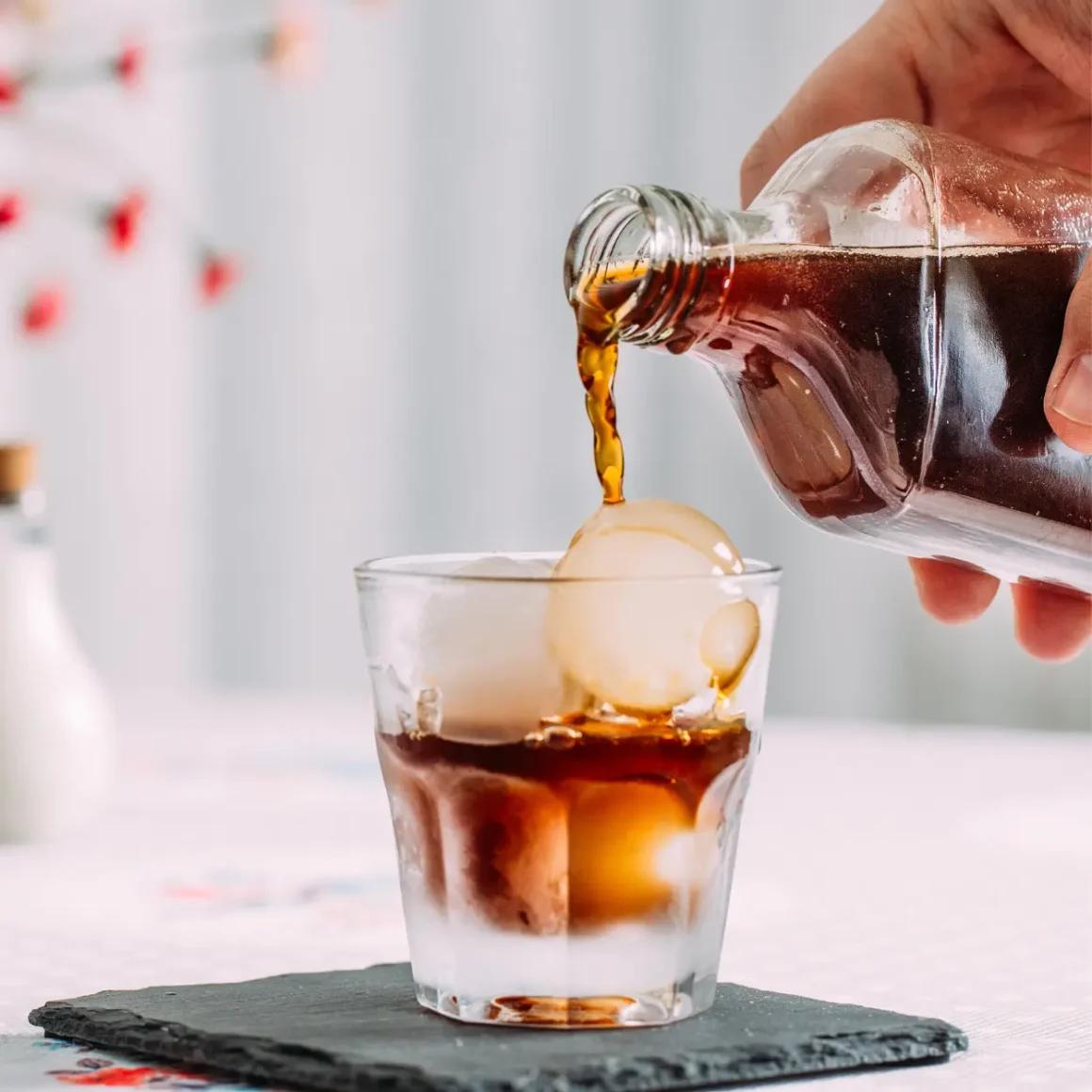
Cold-brew, by its nature, is an iced coffee, but the ways in which it can be served are varied and cater to a spectrum of preferences:
- Straight Up: Many purists prefer their cold pressing beverage undiluted, relishing its smooth and intense flavor.
- With Milk or Cream: Adding a splash of milk, cream, or a dairy-free alternative can lend a creamy texture, making the drink richer.
- Iced Latte: Transforming this type of brew into an iced latte involves adding a larger quantity of milk, resulting in a mellower coffee flavor and a milky consistency.
Espresso: Shots, Lattes, and More

Espresso, with its concentrated nature, serves as the base for many popular coffee drinks:
- Straight Shot: Consumed straight from espresso cups, it’s a quick, intense caffeine shot with a complex flavor profile.
- Cappuccino: A classic, composed of equal parts espresso, steamed milk, and frothed milk. While the traditional café cappuccino offers a balanced coffee and milk flavor, the Freddo cappuccino variation serves it cold, adding a refreshing twist to the beloved classic.
- Latte: A creamier version with more steamed milk than a cappuccino coffee and a small amount of froth on top.
- Americano: Espresso diluted with hot water, making it resemble the strength of drip coffee but retaining the distinct espresso flavor.
How to Choose Your Ideal Cup
Choosing the right coffee serving style boils down to individual preferences concerning flavor, texture, and temperature:
- Flavor Intensity: If you prefer a strong, robust coffee flavor, straight shots of espresso or undiluted cold-brew might be your cup of choice. On the other hand, lattes and milk-infused versions offer a more balanced taste.
- Texture: For those who enjoy creaminess in their coffee, drinks like lattes, cappuccinos, or cold brew with cream are ideal. If you’re more for the pure coffee essence without the milkiness, an Americano or straight cold brew can be more appealing.
- Temperature and Refreshment: If you’re looking for a cold and refreshing drink, especially during warmer days, cold-brew variations or iced lattes can be very satisfying. For a warm and comforting feel, traditional espresso-based drinks served hot are perfect.
Ultimately, the world of coffee serving styles is vast, and part of the joy is in experimenting. Whether you’re in the Espresso vs cold brew debate or exploring the nuances of espresso cups, the journey to find your perfect serving style is a delightful one.
Health Benefits and Caffeine Content

Coffee is not just a beloved beverage for its rich flavor and invigorating properties; it also offers several health benefits when consumed in moderation. Diving deeper into the realms of cold brew and espresso coffee reveals insights into their caffeine content, health benefits, and nutritional value.
Cold Brew: A Smooth Caffeine Kick?
This delectable drink, with its unique brewing method, brings forth some distinctive characteristics in terms of caffeine and health:
- Caffeine Levels: Generally, this type of brew contains more caffeine than regular coffee due to its longer steeping process and concentration. However, this can vary based on the coffee-to-water ratio, the steeping time, and the type of beans used. (3)
- Reduced Acidity: One of the standout benefits of cold pressing is its lower acidity compared to hot-brewed coffee. This can be gentler on the stomach, making it a preferable choice for those with acid sensitivity.
- Decaf Option: For those who love the taste of this type of brew but wish to reduce caffeine intake, decaf cold brew is an excellent alternative. It provides the same smooth taste without the pronounced caffeine kick.
Espresso’s Quick Energy Boost
Espresso coffee, renowned for its concentrated nature, provides a quick jolt of energy:
- Caffeine Punch: Espresso shots, despite their small volume, pack a significant caffeine punch. A typical shot of espresso can contain about as much, if not more, caffeine than a regular cup of coffee.
- Rapid Absorption: Given its concentrated nature, the caffeine from espresso enters the bloodstream more quickly, offering a rapid energy boost. This makes it a favorite for those needing an immediate pick-me-up.
- Heart Health: Some studies suggest that regular, moderate espresso consumption might be linked to a reduced risk of certain heart conditions due to its antioxidants and beneficial compounds.
Nutritional Value & Antioxidants in Coffee
Whether it’s cold-brew or espresso, coffee contains several nutrients and antioxidants beneficial for health:
- Antioxidants: Coffee is rich in bioactive compounds such as chlorogenic acid, which acts as an antioxidant. Antioxidants help combat oxidative stress in the body, potentially reducing the risk of certain diseases.
- Essential Nutrients: Every coffee cup contains small amounts of essential nutrients like vitamins B2 (Riboflavin), B3 (Niacin), and B5 (Pantothenic acid), as well as manganese and potassium.
- Brain Health: Several studies have suggested that regular coffee consumption might be linked to a reduced risk of neurodegenerative diseases like Alzheimer’s and Parkinson’s. The compounds in coffee may offer some neuroprotective effects.
- Metabolism Boost: Caffeine, a primary compound in coffee, is known to enhance metabolism and aid in fat burning, making it a common ingredient in weight loss supplements.
To sum up, while both beverages offer an array of health benefits, it’s essential to consume them in moderation. Each individual’s tolerance to caffeine varies, so it’s crucial to listen to your body and adjust consumption accordingly. Always remember, the best coffee is the one that not only satisfies your taste buds but also aligns with your health and well-being.
Popularity and Cultural Significance
Coffee is more than just a beverage; it’s a cultural phenomenon. Across the globe, the ways we brew, serve, and enjoy coffee have deep historical roots and contemporary significance. From the trendy cold brews to traditional espresso bars, coffee continues to shape our social rituals, our conversations, and our mornings.
Cold Brew in Modern Coffee Culture
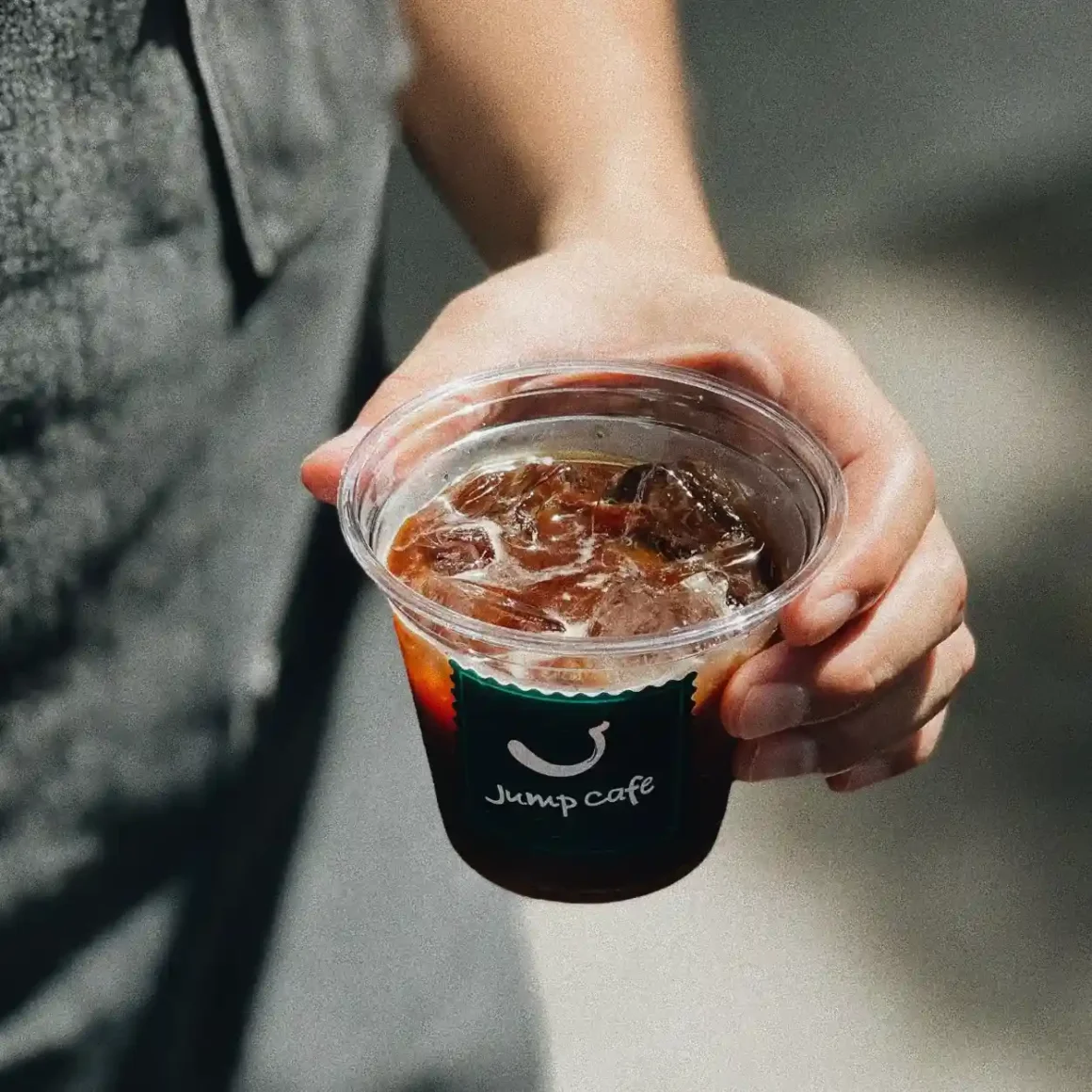
In recent years, cold-brew has emerged as a significant player in the modern coffee scene:
- Rise in Popularity: With the growing desire for innovative and refreshing coffee beverages, especially in warmer climates, this brewing technique has seen a surge in popularity. Many cafes, especially in urban settings, have incorporated this delectable drink into their menu, leading to its widespread acceptance among millennials and Gen Z.
- Influence on Coffee Products: The cold-brew trend has influenced the launch of various coffee products, including ready-to-drink bottled versions, coffee-infused foods, and even cold-brew coffee kits for home use.
Espresso Bars & European Coffee Traditions
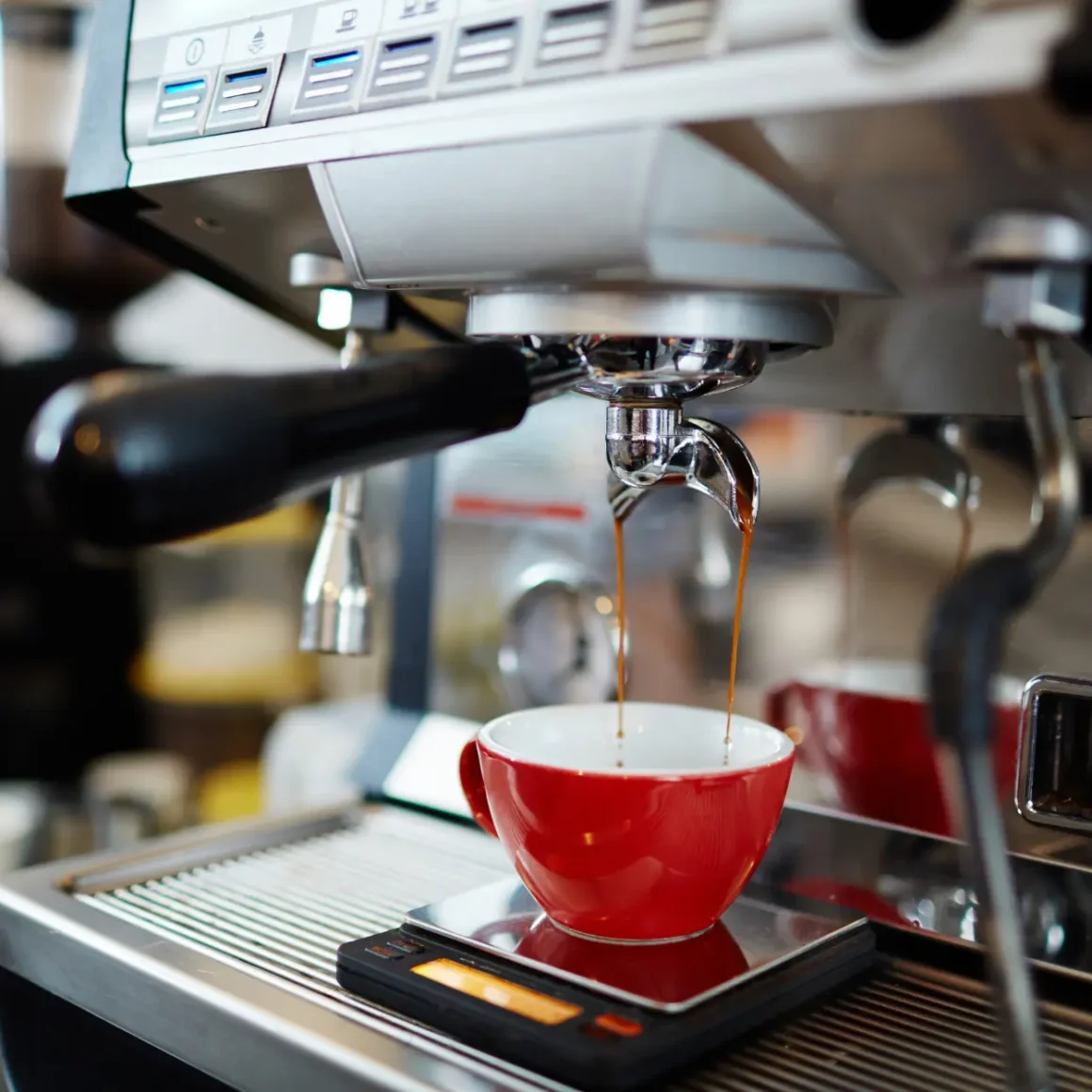
Espresso, while now popular worldwide, has its roots deeply embedded in European culture:
- European Traditions: Beyond Italy, countries like Spain, France, and Portugal have their unique espresso-based beverages and traditions. Whether it’s Cortado coffee in Spain or a Café Crème in France, espresso remains at the heart of European coffee culture.
- Cultural Rituals: In many European countries, sipping an espresso isn’t just about the caffeine kick. It’s a ritual—often enjoyed slowly at a café while reading a newspaper or engaging in conversation, signifying relaxation and leisure.
Coffee Trends: Global Perspectives
As the global coffee scene continues to evolve, two standout beverages – espresso and cold brew – have found their places in various regions, each reflecting different cultural preferences and adaptations. These two coffee methods, while distinct in taste and preparation, represent the diversity and dynamism of coffee consumption worldwide.
Americas
- Espresso: Especially in cities with a strong European influence or large immigrant communities, espresso-based drinks like cappuccinos, lattes, and Americanos are immensely popular. Cafes with European aesthetics and espresso bars have become gathering spots for many.
- Cold Brew: In contrast, the rise of this brew, especially in the U.S., speaks to the preference for refreshing, chilled beverages, particularly during warmer months. Its smooth profile and adaptability (from cold-brew lattes to nitro cold brew) have made it a summer staple in many North American cafes.
Europe
- Espresso: Europe, being the birthplace of espresso, has an undying love for this concentrated coffee shot. From the streets of Italy to the boulevards of Paris, espresso is not just a drink but a lifestyle. The ritual of a midday espresso shot or an after-dinner sip is ingrained in many European cultures.
- Cold Brew: While Europe’s coffee tradition is deeply rooted in espresso, the continent hasn’t been immune to the brewing technique wave. Especially in larger cities and among younger demographics, this delightful concoction has found its niche as a trendy, refreshing alternative to the usual coffee offerings.
Asia
- Espresso: Asian metropolitan areas, influenced by both global trends and their local coffee cultures, have seen a surge in espresso bars. Cities like Tokyo, Seoul, and Singapore boast a mix of international coffee chains and independent cafes serving exquisite espresso concoctions.
- Cold Brew: Given Asia’s warm climates and the populace’s penchant for iced beverages, this type of brew has been a natural fit. From bottled cold brews in Japanese vending machines to artisanal cold brew servings in Balinese cafes, it’s a trend that aligns well with the region’s palate and climate.
Conclusion
In the spirited debate of espresso vs cold brew, it’s evident that both brewing methods offer distinct experiences that cater to diverse palates and moments. Espresso, with its rich European heritage, delivers a bold and intense flavor in a concentrated form, reflecting centuries of coffee tradition. Cold-brew, the newer entrant, brings a refreshing and smooth profile, emblematic of modern innovation in coffee culture. While preferences may vary, what remains undeniable is the vast tapestry of choices available to coffee aficionados today. As we’ve journeyed through their unique characteristics and cultural nuances, it’s clear that both beverages have carved out irreplaceable niches in the world of coffee, ensuring that our cups, whether hot or cold, continue to overflow with rich flavors and stories.
FAQ
What is the caffeine content in cold brew vs espresso?
Cold brew generally has a more extended caffeine release and can be higher in content when undiluted, while espresso delivers a concentrated caffeine punch in a small shot.
How did espresso culture originate in Europe?
Espresso culture began in Italy in the early 20th century, reflecting a desire for quicker coffee brewing methods and evolving into a cornerstone of Italian social life.
Which brewing method is better for sensitive stomachs?
Cold brew is typically better for sensitive stomachs due to its lower acidity compared to traditional brewing methods.
Why is cold brew less acidic than traditional coffee methods?
The cold steeping process extracts fewer acidic compounds from coffee beans, resulting in a smoother, less acidic beverage.
















